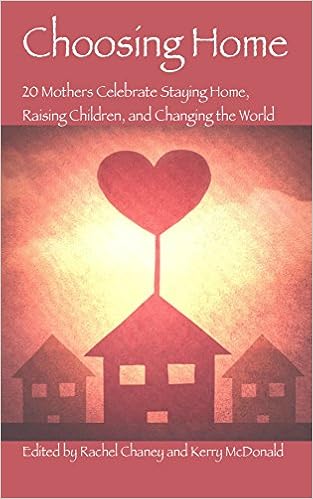The idea of natural learning--that we humans can learn without being taught--is such a difficult concept to grasp in our schooled society that we often cannot imagine it to be true. Despite the fact that we acknowledge the many ways infants and toddlers learn naturally their entire native language, learn to roll and sit and crawl and walk, learn the rhythms of their home and day, and so on, most of us believe that once a child hits "school-age" (now defined as just barely out of diapers), this natural learning suddenly stops.
It doesn't.
We grown-ups stop this natural learning with our industrial system of schooling that hijacks a child's innate curiosity and capacity to explore and discover her world.
Fortunately, research on teaching versus learning coming out of high-profile labs at MIT and UC-Berkeley, is shedding light on what many of us in the unschooled world already know: when a child is allowed to learn naturally, the learning is deeper and much more creative than when a child is taught. As Alison Gopnik of UC-Berkeley explains in her excellent Slate article:
"Perhaps direct instruction can help children learn specific facts and skills, but what about curiosity and creativity--abilities that are even more important for learning in the long run?...While learning from a teacher may help children get to a specific answer more quickly, it also makes them less likely to discover new information about a problem and to create a new and unexpected solution."Gopnik explains the research findings in her studies with four-year-olds, as well as similar findings out of MIT, that demonstrate that when children are taught something, they are typically able to then get to the right answer on their own by loosely mimicking what the teacher demonstrated. But if the children are instead allowed to learn--to play with a certain toy, for example, that makes certain sounds when a certain sequence is followed--they will get to the "right" answer in fewer steps than the taught children, and they will discover other parts of the toy that can do interesting things--which the taught children do not discover.
This research is fascinating and reinforces that natural learning leads to deeper, more meaningful, more enduring learning that sparks much more natural creativity than top-down learning can. As we leave the Industrial Era for the Imagination Age, where creativity, ingenuity, problem-solving, and collaboration will be much more important than knowing how to work in an assembly-line, education needs to shift from its present industrial model to a natural learning one. The research clearly shows this. If we want creative thinkers and innovative problem-solvers to tackle the big issues our planet now faces, we don't need mimics--we need learners!
Here is a real-life example of natural learning in my home this week:
Brian was tucking in my nine-year-old, never-been-schooled daughter the other night when she said, "Daddy, did you ever notice on a calendar that for whatever column you're in, you skip count by that number, and the number will be divisible by the number of that column?" Um, nope, never knew that. (And, for the record, she had to explain it to me three times and I'm still not sure I understand it.)
So the next morning, still fascinated by this potential calendar pattern, she wanted to see if it held true indefinitely. Brian helped her to create a simple Excel model to input her numbers and test her theory. It worked. She printed the spreadsheet and brought it to her math mentor, Beth (whom I've written about before and whose math classes for local homeschoolers are one of the focal points of our week). Beth confirmed her theory, said it's a form of modular mathematics, and encouraged my daughter and her class to think about similar mathematical patterns in everyday life. Math is everywhere!
The point of this story is that my daughter was never explicitly taught about the calendar, the way most of us who were schooled were taught. We were taught that a calendar is a specific tool for a specific purpose with a specific set of "rules." You know: "30 days has September, April, June and November..." But my daughter learned about the calendar naturally, through her everyday living, through her interest in flipping through its pages when she was younger, to wanting to know how many weeks until Christmas, to actively scheduling various activities each week. She was not "taught" that a calendar is a static tool; she learned on her own that it is dynamic and interesting, and so it's no wonder that she might discover new number patterns by gazing at a calendar one day.
The other point of the story (and I'm sure there are more than two), is that teachers are essential. Beth, who was trained in mathematics at MIT and has helped hundreds of students to think creatively about mathematical concepts like patterns and sequences, has been an incredible mentor for my daughter who has always been intrigued by these analytics. The important difference between natural learning and teaching is that with natural learning it's the learner who seeks the teaching, not the teacher who trains the learner. This is a critical distinction: in natural learning, the teacher is the facilitator, available to guide and explore alongside the learner. The teacher is the follower, not the leader.
This is why I scoff at the idea that natural, self-directed learning can be integrated into our current system of compulsory government schooling. It cannot. The industrial model of coercive schooling is an educational relic and, as the research on natural learning mentioned above shows, it holds us back as a society rather than enabling us all to move forward to where the Imagination Age requires we go.
The current compulsory schooling model was imposed in 1852 to construct a compliant, conforming workforce of factory laborers while Horace Mann, who passed the nation's first compulsory schooling law in Massachusetts, homeschooled his own children and never had any intention of sending his children to the common schools he created for others. Despite the cries of more schooling! earlier schooling! higher-stakes schooling! to close the so-called achievement gap, we need to look more critically at an industrial schooling system that was designed to perpetuate these inequities and to create this achievement gap.
I believe that the way we create true equality of opportunity in this country, providing all children with the skills and agency to succeed in the Imagination Age, is to end our modern experiment with compulsory schooling and instead embrace and invest in alternatives to school, like unschooling, self-directed learning centers (like nearby Parts & Crafts that I wrote about recently), and democratic education.
Only then will we be able to allow all children to retain their natural learning instincts, cultivate the curiosity and creativity essential for the Imagination Age, and use the gifts of good teachers more appropriately.
























No comments:
Post a Comment
Note: Only a member of this blog may post a comment.